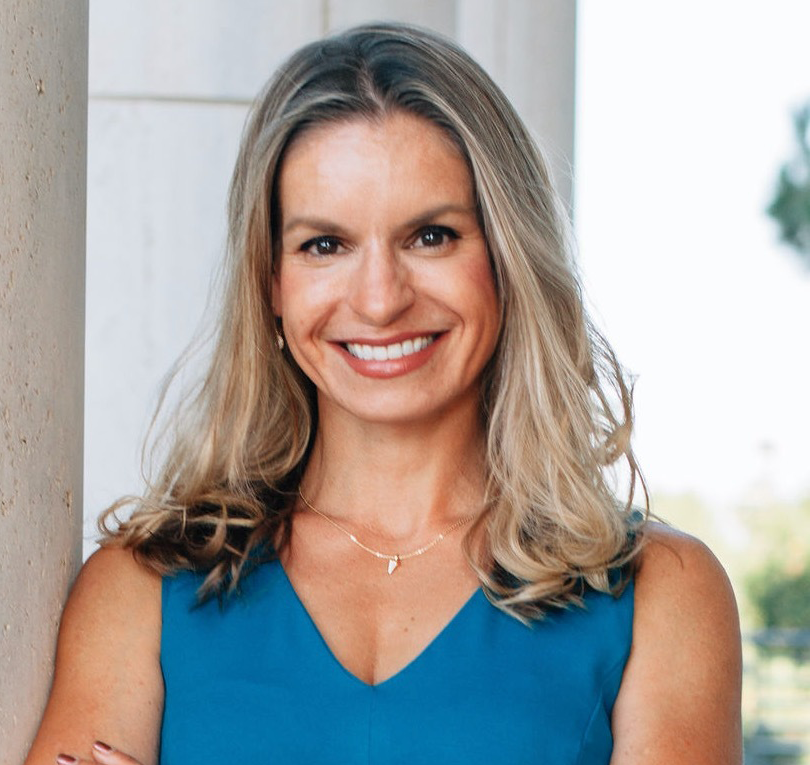Towards a Deeper Understanding with the Monterey Bay Aquarium Research Institute
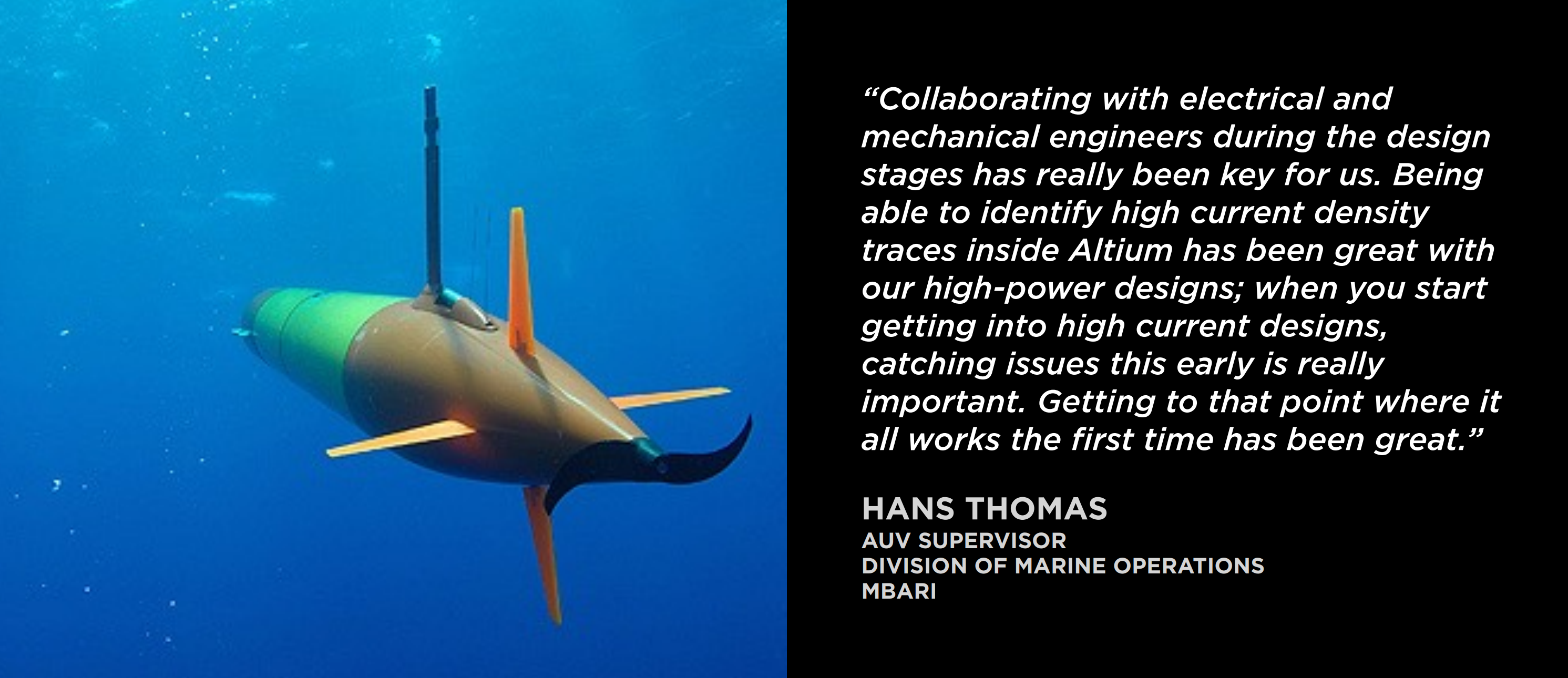
The Monterey Bay Aquarium Research Institute (MBARI) has been studying our oceans for over 30 years, examining everything from the axial seamount and the active submarine volcano along the Juan de Fuca Ridge off the coast of Oregon to studying methane and hydrocarbons in mud in the Arctic and more.
MBARI’s extensive research has become paramount towards a larger understanding of the extent of climate change, focusing on the biologic response of stressors to the oceans.
Nowhere is the phenomenon of climate change more immediate than in our oceans and coastal regions; while the rate of change in the earth’s oceans is relatively slow, steady temperature increases, seasonal variations, and major events can have tremendous impact, forcing aquatic life from the bottom of the seafloor into the mid and upper columns.
MBARI have been studying these process changes with techniques like deep-water mapping three to four thousand meters below the surface of the ocean, collecting sonar data, measuring turbulence and bioluminescence up to 150 days per year.
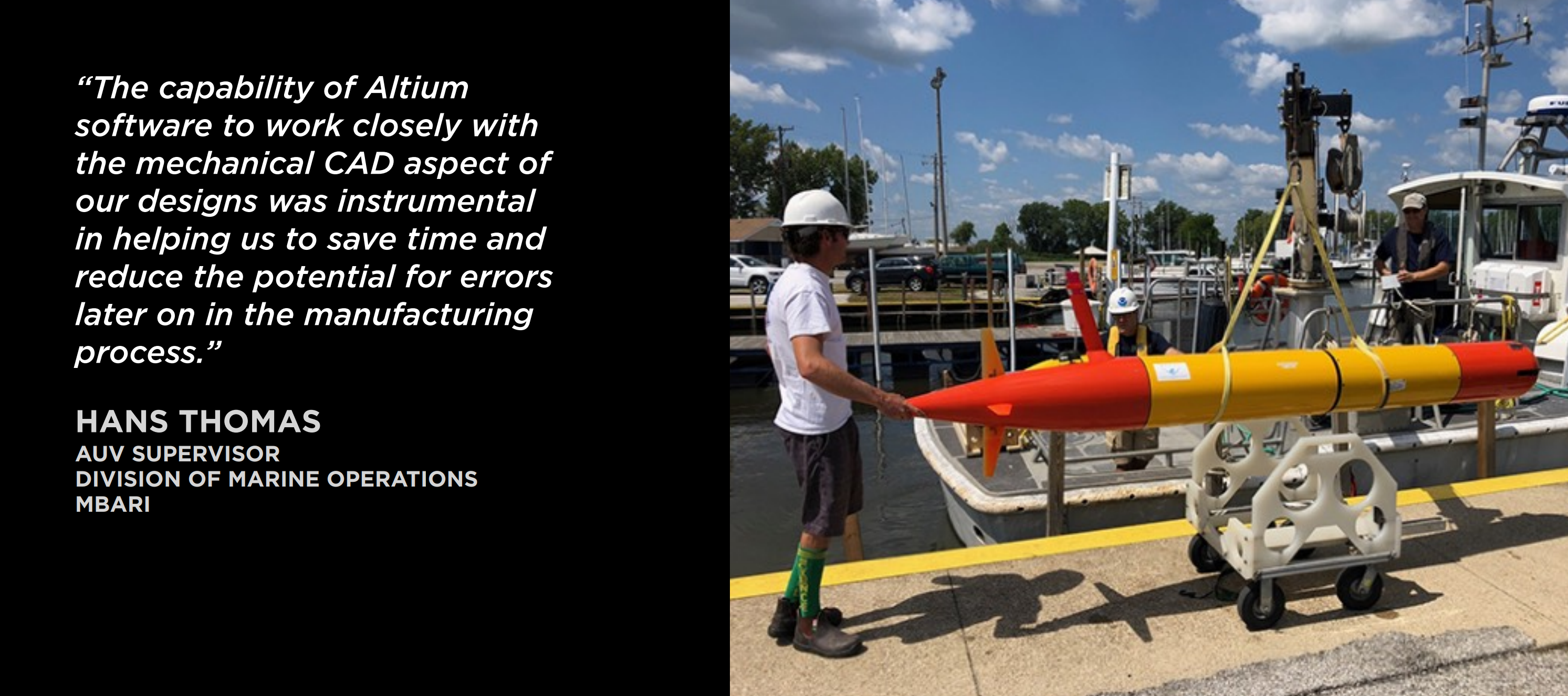
To conduct these various studies, MBARI use their own proprietary technology, including long-range autonomous underwater vehicles (LRAUVs) designed to measure, collect and film every 30 days.
Altium Designer and Altium 365 have been instrumental in helping to design these autonomous underwater vehicles (AUVs), empowering MBARI’s most important missions while dramatically reducing development time.
Altium 365 leverages CAD-specific intelligence to store design data in a way that makes projects, and version history accessible and easy to navigate on the web, so MBARI’s research and development team can work from anywhere in the world--even when they’re out at sea.
Getting it Right the Very First Time with Altium
When designing LRAUVs and AUVs, ample capabilities have to be packed into a very small space, including 5000-watt lithium ion batteries encased in air-tight sheet metal pressure housing.
As Hans Thomas, AUV Supervisor, Division of Marine Operations at MBARI, explains, “The work my group does involves building some fairly complex assemblies, like PCBs that interface with tightly constrained fixtures that hold everything inside pressure housing. The capability of Altium software to work closely with the mechanical CAD aspect of our designs, was instrumental in helping us to save time and reduce the potential for errors later on in the manufacturing process.”
Altium Designer, effortlessly accessible via the integrated Altium 365 platform, has been invaluable to Thomas and his team, integrating seamlessly with their mechanical CAD tools.
As Thomas explains, “It is critical for us to make sure that all of the components on the board are going to fit inside the AUV chassis. With Altium Designer, we can see how everything fits together early on. Working with more advanced parts is also much easier with Altium’s extensive parts library. Being able to find the parts we need in one place has been a big time saver.”
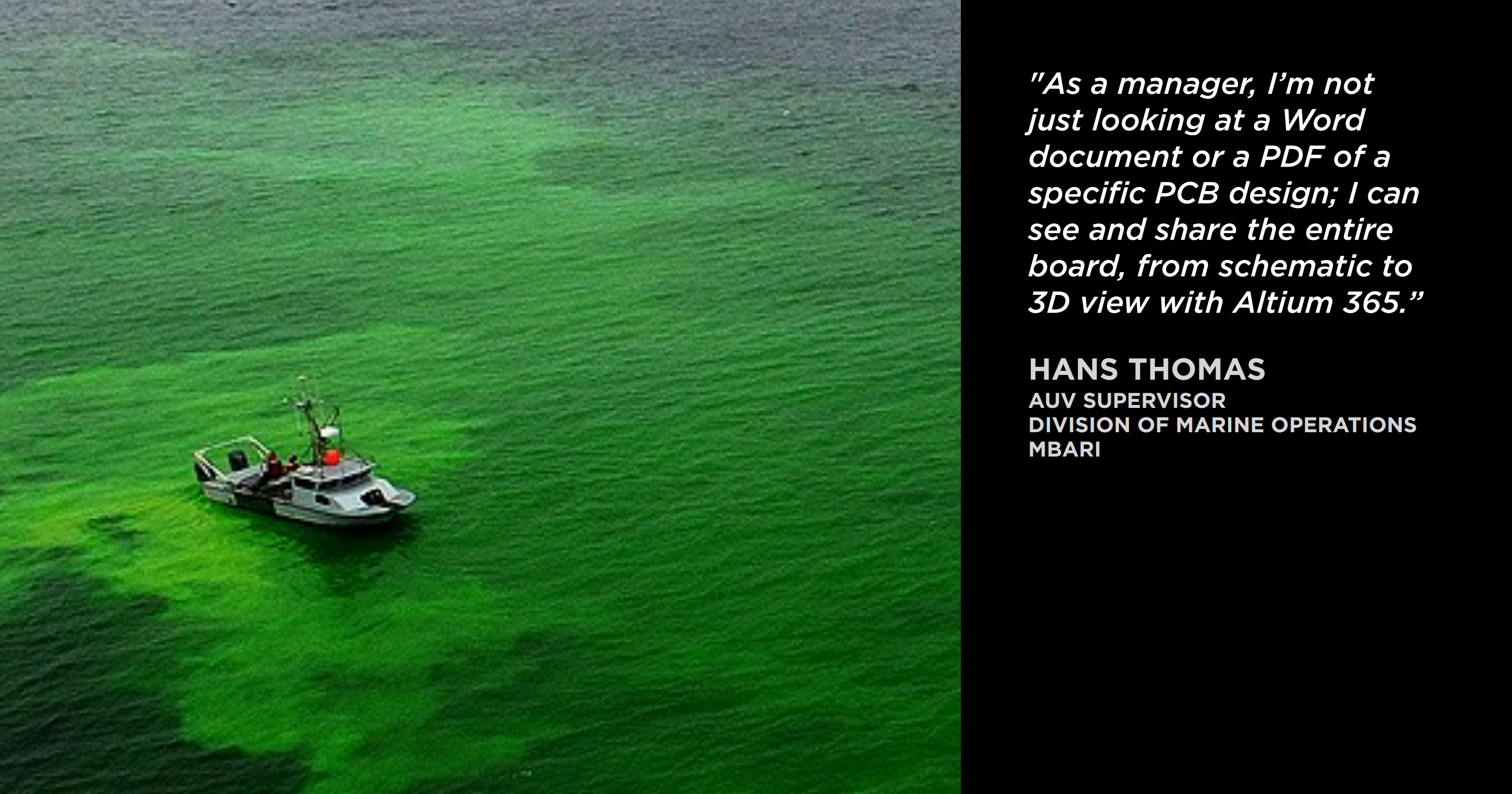
Advanced Integration for Seamless Design
The ability to adjust schematics and footprints at different stages in the design process is essential for Thomas and his team, and not just because of the limited physical space they’re working with when they design custom PCBs for AUVs.
The highly specialized underwater vehicles require multiple lithium ion batteries—including 55 batteries mounted onto three customized PCBs with multiple components inside an airtight chassis—so Thomas and his team have to know the boards will fit perfectly from the early design stages. The boards can cost as much as $5000 once manufactured, leaving little room for error.
Thankfully, Altium Designer makes it easy for Thomas to make changes long before the manufacturing stage. As Thomas explains, “As a manager, I’m not just looking at a Word document or a PDF of a specific PCB design; I can see and share the entire board, from schematic to 3D view with Altium 365. Any time you change anything in the design, you get very careful tracking, footprints and revisions, which makes version control much simpler, eliminating paper trails. This has made the entire design and manufacturing process much faster and easier.”
As Thomas elaborates, “Collaborating with electrical and mechanical engineers during the design stages has really been key for us. Being able to identify high current density traces inside Altium has been great with our high-power designs; when you start getting into high current designs, catching issues this early is really important. Getting to that point where it all works the first time
has been great.”
With the addition of Altium 365, Thomas can even access his designs from offshore while out in
the ocean, taking remote work to a whole new level.
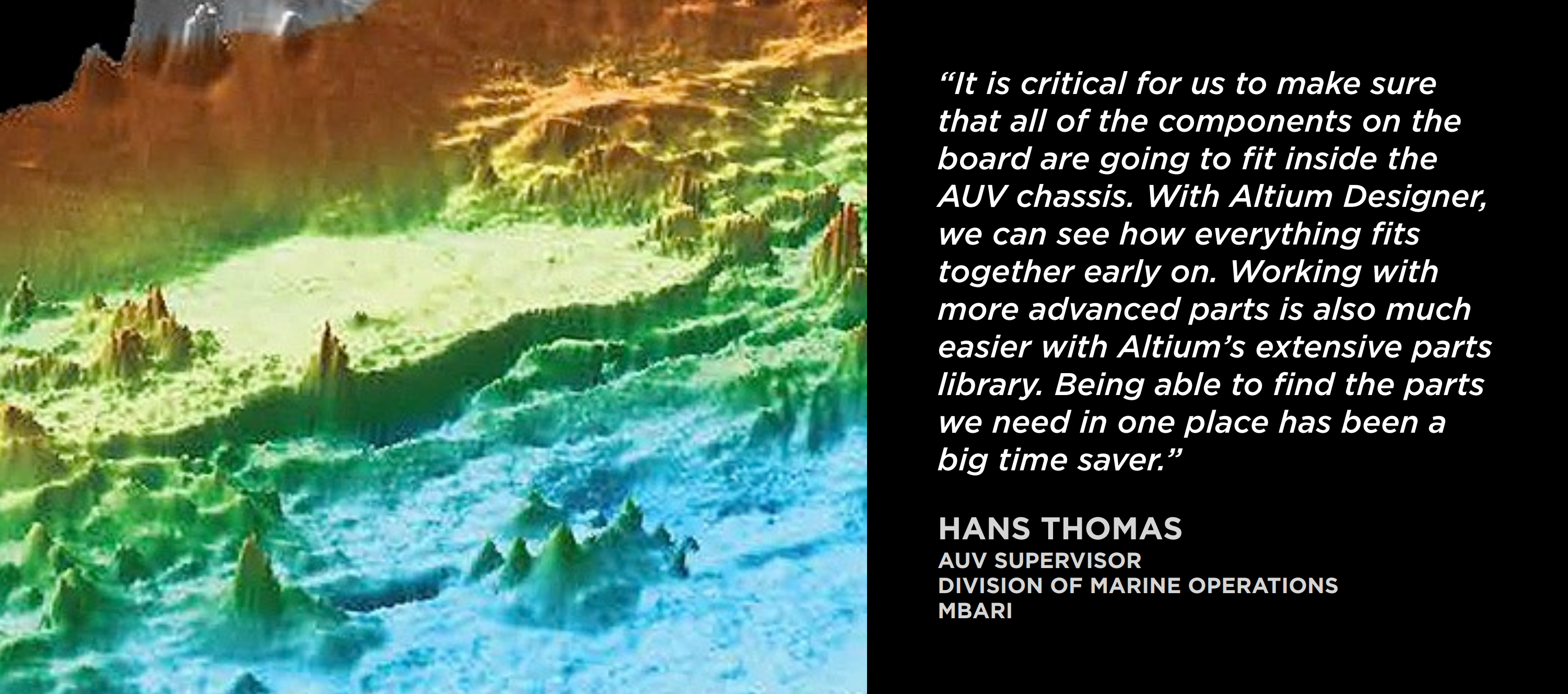
Delivering Data to Advance Essential Research
With faster production cycles developing robust LRAUVs and AUVs built to withstand weeks to months of being submerged, MBARI have been able to deploy vehicles continuously for 100-150 days per year, launching new missions every month.
By studying the ways our oceans are changing, MBARI has been able to provide data essential to our understanding of climate change as well as major oceanic events and the proliferation of harmful algae blooms and the effects they have on coastal regions.
This essential data can guide collective understanding as well as how to implement vital measures to offset climate change and protect our world’s oceans, from reducing carbon emissions to creating viable alternatives to plastics and other non-biodegradable materials. With a little help from Altium, the Monterey Bay Aquarium Research Institute is helping safeguard our fragile planet, one intrepid underwater vehicle at a time.

